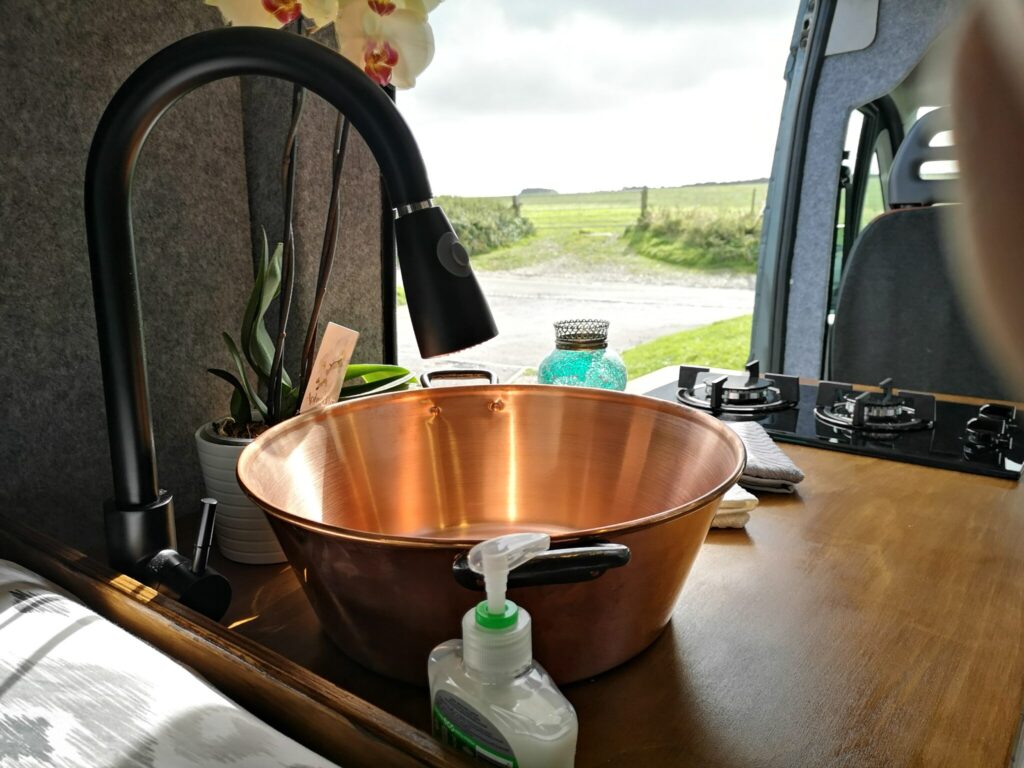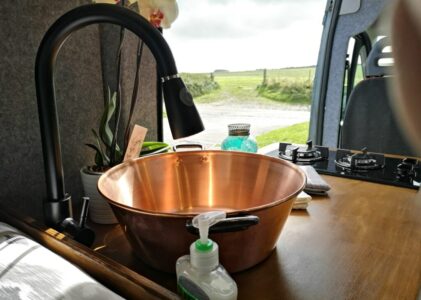Are you planning to hit the open road and embark on a campervan adventure? One essential aspect you must consider for a comfortable journey is your campervan bathroom. Having a functional bathroom in your campervan can make life on the road much more convenient. In this comprehensive guide, we will delve deep into the water and plumbing requirements for a campervan bathroom, ensuring you have all the necessary knowledge to build or maintain this essential feature.
The Importance of a Campervan Bathroom
Before we dive into the specifics of water and plumbing requirements, let’s understand why having a bathroom in your campervan is crucial.
Convenience and Comfort
A campervan bathroom provides the ultimate convenience during your travels. No more searching for public restrooms or relying on nature’s call in the wilderness. With a bathroom on board, you have the comfort and privacy of home, wherever you go.
Hygiene and Health
Maintaining personal hygiene is vital, especially when you’re on the road for extended periods. A campervan bathroom allows you to stay clean and healthy, reducing the risk of illnesses caused by unhygienic conditions.
Freedom and Independence
Having a bathroom in your campervan grants you the freedom to explore remote areas and camp in off-grid locations. You are not tied to campgrounds with restroom facilities, giving you the independence to choose your adventure.
Now that we understand why a campervan bathroom is essential, let’s delve into the nitty-gritty details of water and plumbing requirements.
Water Supply for Your Campervan Bathroom
Water is the lifeblood of any campervan bathroom. Ensuring a reliable water supply is the first step in creating a functional onboard bathroom.
Water Tanks
The heart of your campervan’s water system is its water tank. Depending on the size of your campervan and your travel needs, you can choose from various tank options:
- Freshwater Tank: This tank stores clean water for drinking, washing dishes, and, most importantly, for your bathroom needs. Sizes typically range from 10 to 40 gallons, so choose a size that suits your usage.
- Gray Water Tank: The gray water tank collects wastewater from sinks, showers, and the bathroom. Proper disposal and management of gray water are essential to maintain environmental responsibility during your travels.
- Black Water Tank: If your campervan includes a toilet, you’ll need a black water tank to collect and contain sewage waste. Ensure that it complies with sanitation regulations and is equipped with a proper flushing system.
Water Pump
To ensure a steady flow of water to your campervan bathroom fixtures, you’ll need a water pump. A reliable 12-volt water pump is commonly used in campervan setups. It pressurizes the water system and provides consistent water flow to taps and the toilet.
Plumbing Fixtures
Now that you have your water tanks and pump in place, it’s time to install plumbing fixtures for your campervan bathroom:
- Faucet: Choose a high-quality faucet for your sink to ensure efficient water flow and durability. Consider a foldable or pull-out design to save space in your campervan.
- Shower Head: If your campervan includes a shower, select a low-flow, water-saving showerhead. This not only conserves water but also reduces the strain on your water supply.
- Toilet: There are various options for campervan toilets, including cassette toilets, composting toilets, and portable toilets. Each has its advantages and disadvantages, so choose the one that best fits your preferences and needs.
Managing Water Consumption
While having a sufficient water supply is crucial, it’s equally important to manage your water consumption efficiently, especially when traveling to remote areas where refilling water tanks may be challenging.
Water-Saving Tips
To conserve water while using your campervan bathroom:
- Take shorter showers to reduce water usage.
- Use a low-flow showerhead to minimize water wastage.
- Collect rainwater when possible for non-potable purposes like flushing the toilet.
- Fix any leaks promptly to prevent water loss.
Waste Disposal and Sanitation
Proper waste disposal and sanitation are essential not only for the environment but also for your health and comfort.
Gray Water Disposal
Dispose of gray water responsibly to minimize your environmental impact. You can:
- Use Designated Dump Stations: Many campgrounds and RV parks have designated dump stations for gray water disposal.
- Follow Leave No Trace Principles: When camping in the wilderness, follow Leave No Trace principles by dispersing gray water at least 200 feet from water sources.
- Use Biodegradable Soaps: Opt for biodegradable soaps and cleaning agents to reduce the environmental impact of your gray water.
Black Water Management
Managing black water from your campervan toilet requires additional care and attention. Here’s what you need to know:
- Dumping Stations: Look for campgrounds or RV parks with designated dumping stations for black water disposal. Always follow their guidelines and rules.
- Chemical Treatments: Consider using chemical treatments in your black water tank to break down waste and control odors. Ensure these treatments are eco-friendly and safe for septic systems.
- Regular Cleaning: Keep the black water tank clean and well-maintained to prevent clogs and unpleasant odors.
Heating and Insulation
In colder climates, having a heated campervan bathroom is essential for comfort. Proper insulation and heating solutions can make all the difference.
Insulation
Insulate the walls and floor of your campervan bathroom to retain heat and prevent it from escaping. This will help keep the bathroom area warm during chilly nights.
Heating Solutions
Consider installing a heating system in your campervan bathroom, such as:
- Electric Heaters: Portable electric heaters are a cost-effective option to warm up your bathroom space. Ensure they have safety features like overheat protection.
- Propane Heaters: Propane heaters are efficient and provide consistent warmth. However, they require proper ventilation and safety precautions.
Maintenance and Troubleshooting
To keep your campervan bathroom in excellent working condition, regular maintenance is essential.
Preventive Maintenance
Perform these routine tasks to prevent issues:
- Tank Cleaning: Regularly clean and sanitize your water tanks to maintain water quality.
- Check for Leaks: Inspect plumbing connections and fixtures for leaks. Fix any leaks promptly to prevent water damage.
- Monitor Tank Levels: Keep an eye on tank levels to avoid overflows and optimize your water supply.
Troubleshooting Common Issues
If you encounter problems with your campervan bathroom, here are some common troubleshooting steps:
- Low Water Pressure: Check for clogs or kinks in the water lines. Clean or replace filters if necessary.
- Toilet Issues: If your campervan toilet isn’t flushing correctly, check the black water tank for obstructions. Chemical treatments can help break down waste.
- Leaks: Inspect all plumbing connections and tighten them if needed. Replace damaged seals or connections.
Water and Plumbing
A campervan bathroom is more than just a convenience; it’s a necessity for any road trip enthusiast. By understanding and meeting the water and plumbing requirements discussed in this guide, you can ensure a comfortable and enjoyable journey on the open road. So, gear up, hit the highway, and embrace the freedom of the campervan lifestyle with a well-equipped bathroom that meets all your needs.
Now, get ready to embark on your adventure and experience the joys of campervan travel with a fully functional bathroom by your side.
Bon voyage!

